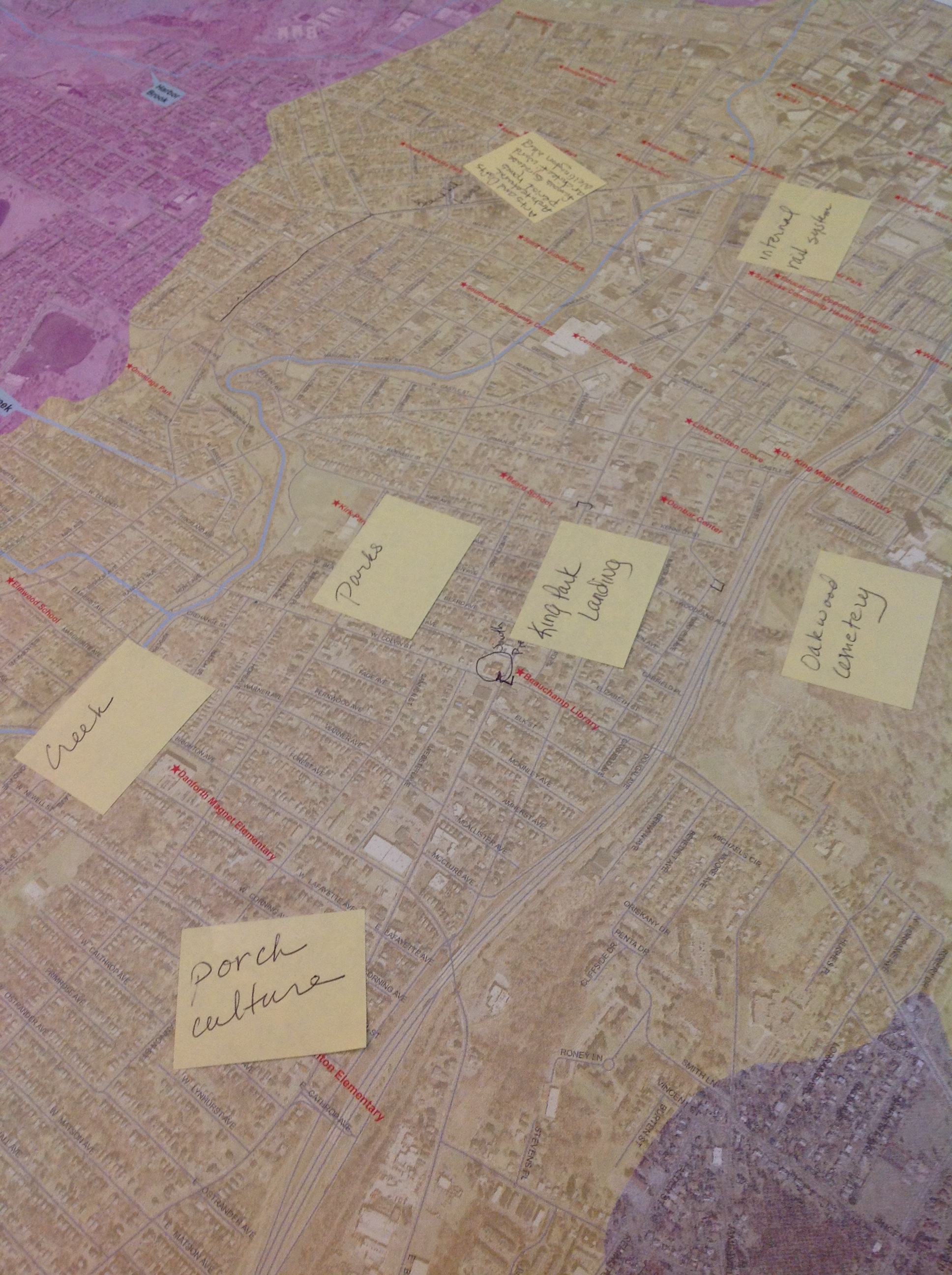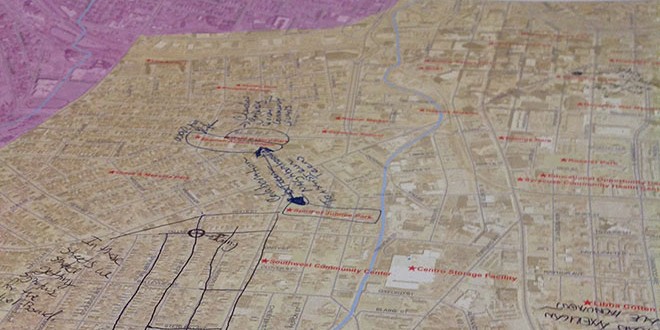Reviving Place Project seeks feedback from South Side residents
The South Side neighborhood was put under a microscope June 16 at the Southwest Community Center as residents were prompted to assume a role analogous to that of microbiologists examining
a Petri dish.

Funded by a grant from the Environmental Protection Agency, a crew from the local Onondaga Environmental Institute made a splash at the community center. The team was led by Amy Samuels, OEI education and outreach coordinator, and her aide-de-camp, Sarah Wraight. Their goal was to facilitate the process of having community members help build an artistic map of the South Side from the ground up, beginning with the nitty-gritty rather than with the big picture.
“The challenge for this session is to start with the little details, the tiny things, that surround us on the South Side,” Wraight said. “To think what they mean to us.”
Samuels suggested ideas such as flowers, trees, birds and other small animals that may lift the spirits of the neighbors on a regular basis.
In order to accomplish the task posed by Samuels and Wraight, South Side neighbors assembled around four tables placed in the lobby and, after they were done pondering the questions, they rearranged the chairs in a big circle to report back on their thoughts.
One of the neighbors voicing his opinion was Lionel Logan. Logan has a storied trajectory on the South Side. He served as the first president of the board of the Southwest Community Center, which this year celebrates its 40th anniversary. More recently, he was the president of the board of the Partnership for Onondaga Creek (POC).
Besides the community center, which he described as a “unique facility,” Logan said that his favorite places on the South Side are the front porches. “These porches were gathering locations for the community where everyone saw everyone and this provided safety for the neighborhood,” he added. “To some extent, this still exists today.”
Then Samuels as facilitator shifted gears from the micro level to a more macro one when she asked people at the gathering to share their views about the significance of Onondaga Creek to the South Side. She prefaced the discussion by saying that its watershed connects the neighbors.
Many of the neighbors present at the event were affiliated with the Partnership for Onondaga Creek, which opposed the grey infrastructure propounded by former Onondaga County Executive Nick Pirro in the form of a sewage treatment plant built along Midland Avenue. The discussion got a political tinge when they spoke out.
“We, the South Side everyday residents, organized protests against the plant,” said Lanika Mabrey, a POC member. “We fought for our spaces and this struggle was my baptism into the activism world.”
Logan suggested that the actions taken by the POC back then had not been in vain as they had partial successes. “The scope of the neighborhood area seized by the county for the sewage treatment plant was pushed further back from West Castle Street,” he said. “The houses on Blaine Street wouldn’t be there now if the community and the partnership hadn’t taken the actions that they took. These actions also allowed for more green space to exist now.”
After this segment, Helen Washington veered the conversation into the topic of the youth. Washington is the owner of Honey’s Truffles, which donated snacks for the event.
Washington said that the younger generation on the South Side has a negative impression of the city.
“The younger people should be here to get to know the value of the city,” she said. “This would get a layer to peel off from their eyes.”
Mable Wilson, a POC organizer, recommended teaching the youngsters how to garden and fish. “Teenagers should get hired to work in our gardens,” she said.
Samuels concluded the meeting by suggesting that the Reviving Place Project sponsored by OEI was consistent with Washington and Wilson’s visions regarding doing outreach to the children. She said, “In the second year of this project, we will be going to South Side schools.”
— Article by Miguel Balbuena, The Stand community correspondent
 The Stand
The Stand


